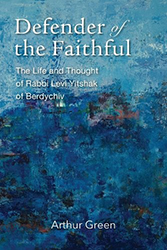Glenn Dynner’s most recent book, The Light of Learning, greatly enriches our understanding of Hasidism. Studies of the Hasidic movement tend to focus either on its early years — from its origin and development into a mass, popular movement — or its post – World War II boom. Moreover, Hasidism is often associated with otherworldly matters: the charismatic authority of the leader or rebbe, distinctive worship practices, and mystical texts. Without denying these components, Dynner’s study focuses on the political and educational activities of Hasidism during the early twentieth century, a period that has often been overlooked by scholars. Dynner shows that, during the interwar period in Poland, both Hasidic leaders and (male and female) practitioners grappled with a number of modern political, economic, and social changes. Rather than ignoring or rejecting these developments, Hasidic leaders responded to them by creating new educational institutions, and by engaging politically with the secular state in ways previously foreign to Hasidism.
The Second Polish Republic (1918 – 1939) emerged out of the wreckage of World War I. For the first time in over a century, Poland was politically autonomous. The new state included Galicia, home to many important Hasidic communities. The nascent Polish state sought to foster Polish acculturation through educational reform. Jews also experienced violent pogroms during this period. The death of Polish statesman Józef Piłsudski in 1935 gave rise to an increase in anti-Jewish activity, significantly restricting the lives of Hasidic Jews.
In addition to these political developments, a wide range of new cultural forms and religious practices offered an alternative to both Hasidic and non-Hasidic traditional Judaism. Significantly, Zionist and socialist movements competed with traditional Judaism for the hearts and minds of young Jews through a variety of educational and cultural projects.
To address this “crisis,” Hasidic groups created educational institutions that sought to keep Jewish youth within the fold. Dynner explains that the “mobilization of Torah education emerges as Polish Hasidism’s primary tactic for subverting the civilizing projects of the state and its perceived secularist Jewish allies.” Rather than focusing on the religious experience that characterized Hasidism at its outset, these schools emphasized intellectual engagement with Jewish texts. Just as importantly, thanks to the work of Sarah Schreiner, a network of girls schools, called Bais Yaakov, emerged.
The conditions of the Second Polish Republic spurred traditionalist Jews to organize themselves politically. Building on organizational momentum from the prewar period, Eastern European traditionalists — centrally under the influence of the Gerrer Rebbe, Rabbi Avraham Mordechai Alter (1866 – 1948) — formed Agudath Israel (called Aguda), an international political movement of Orthodox Jews that engaged in Polish party politics and elections. Other Hasidic groups rejected Aguda and its engagement with the Polish state. They argued that political activity drained one’s ability to engage in Torah study, the religious activity par excellence.
The final chapter explores how Hasidic Jewish leaders sought to save Jewish lives and resist Nazi attacks during the Holocaust. It’s melancholic to read The Light of Learning and its analysis of Hasidic life in interwar Poland, knowing that the Nazis would soon wreak destruction on European Hasidism. Nonetheless, Dynner’s book shows that there is ample reason to appreciate the distinctively vibrant forms of Hasidic Judaism that flourished in interwar Poland.
Brian Hillman is an assistant professor in the Department of Philosophy and Religious Studies at Towson University.





